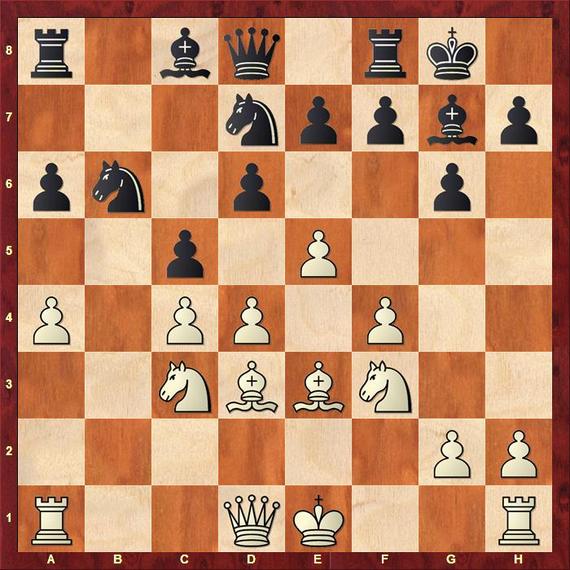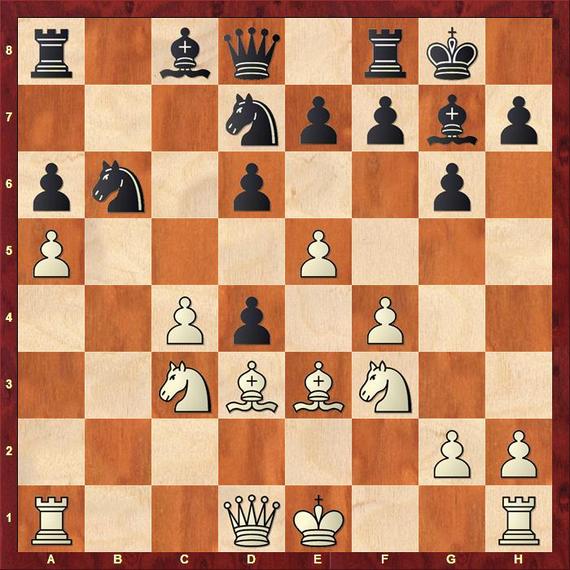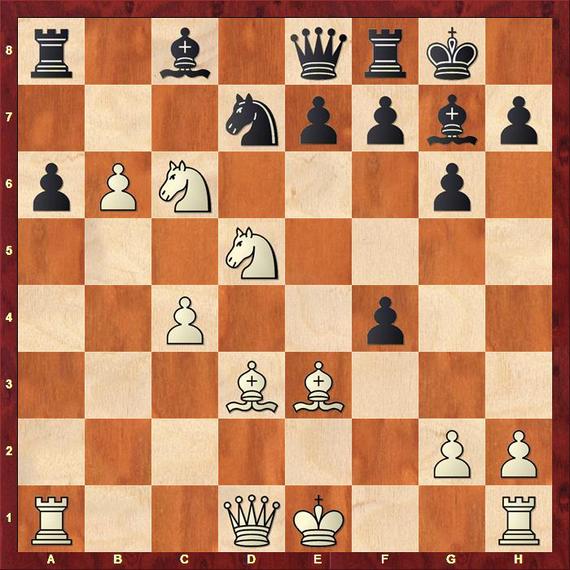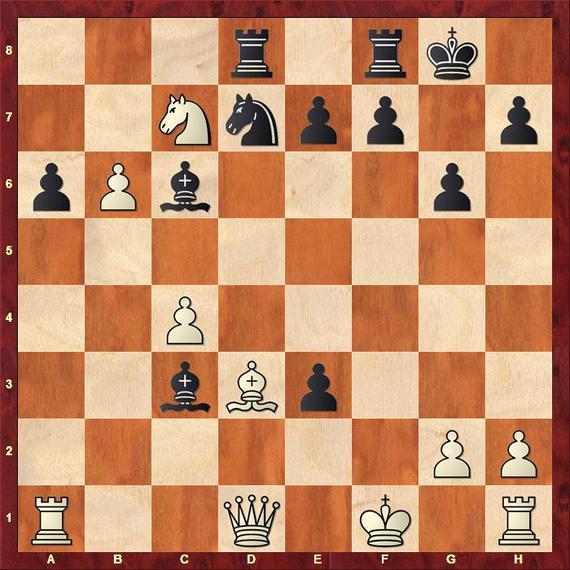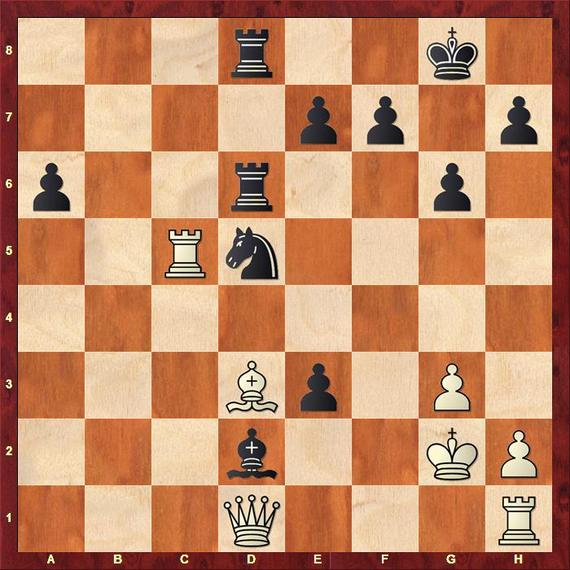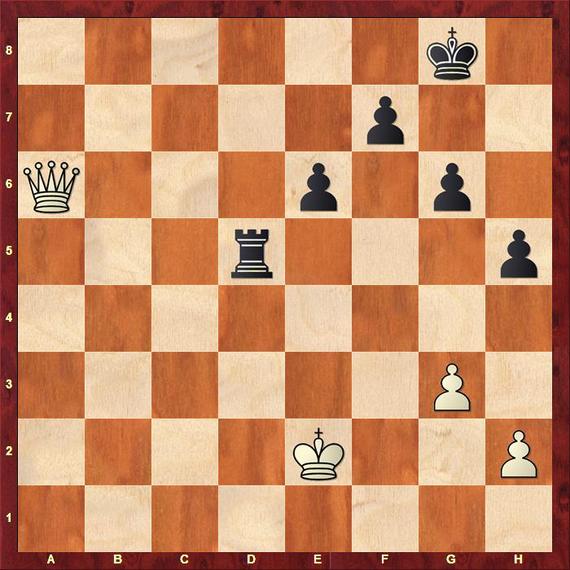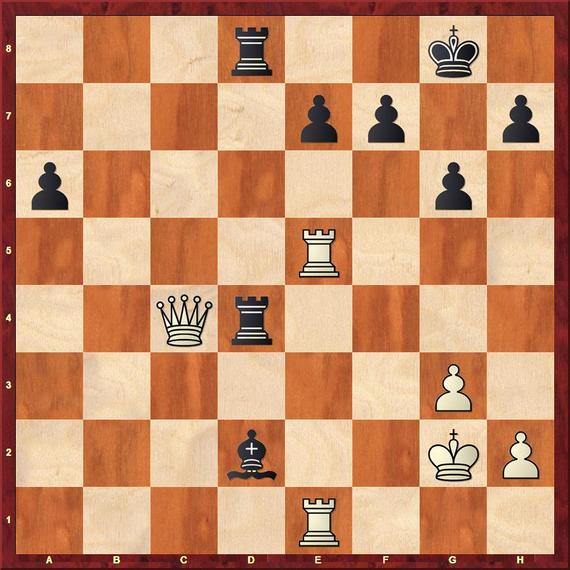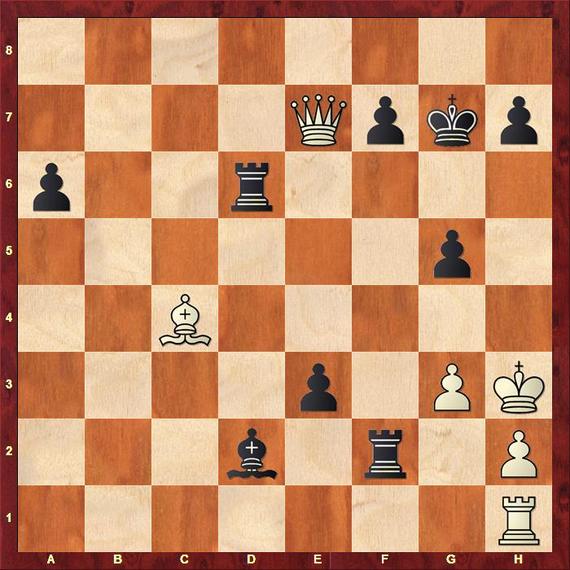
In 1975, the organizers of the traditional chess tournament in the Dutch coastal town of Wijk aan Zee inaugurated a prize for the most spectacular game. They expected breathtaking encounters, griping contests, and some glamour and charm.
Throughout the four decades many grandmasters were rewarded for their thrilling play, including some world champions. Magnus Carlsen won it in 2004 at the age of 13 and was called the Mozart of Chess in the Washington Post. Garry Kasparov created an incredible masterpiece against Veselin Topalov in 1999, perhaps the most brilliant game he has ever played. Vishy Anand's amazing attacking symphony against Levon Aronian in 2013 brought memories of the legendary Akiba Rubinstein.
Forty years ago, the Leo van Kuijk prize for the most spectacular game was given to me by his son (right on the photo). I earned it for a positional queen sacrifice for a mere bishop against Lajos Portisch. It was a fascinating draw and the Hungarian grandmaster thought we should split the prize. "You got my queen," I told him,"I get the prize. Mind over matter." Portisch didn't come up short. He won the 1975 Wijk aan Zee tournament.
The game was analyzed by strong grandmasters such as Jan Timman, Ljubomir Ljubojevic, Ulf Andersson, Jonathan Speelman, Ludek Pachman and many others. I analyzed it on 15 pages in the tournament book, but it is presented here in much shorter version. It also appeared in Andrew Soltis' " The 100 Best Chess Games of the 20th Century, Ranked." The computers more or less confirmed our findings.
The play of six acts begins with the Saemisch variation of the King's Indian defense - Portisch's favorite line.
Portisch,Lajos - Kavalek,Lubomir
Wijk aan Zee 1975
1.d4 Nf6 2.c4 g6 3.Nc3 Bg7 4.e4 d6 5.f3 c6 6.Be3 a6 7.Bd3 b5
The Accelerated Robert Byrne variation. The b7-b5 strike is usually played after Black castles.
8.e5!
Boris Spassky's advance allows White to grab space. He made this novelty during our game in San Juan in 1969.
8...Nfd7
An improvement to 8...dxe5? 9.dxe5 (White now has the square d4 for his knight) 9...Ng8 10.f4 Nh6 11.Nf3 Bf5 12.Be2! Qxd1+ 13.Rxd1 f6 14.Nd4! and White has a clear advantage. Spassky beat me in 27 moves.
9.f4 0-0 10.Nf3 Nb6?! 11.b3!
Restricting the black pieces.
11...N8d7
The black knights are entangled and Portisch strikes immediately.
12.a4!
Threatening to win the knight with 13.a5. After 12.c5 b4! Black is fine.
12...bxc4 13.bxc4
Act One: Against the wall
"The safer 13...a5 would cut Black's risks considerably, compared with the game, but white would still be better after 14.c5. The natural continuation 13...Bb7 14.a5 Nc8 would leave black minor pieces in a mess," wrote Andrew Soltis.
13...c5?!
The incredible journey begins with a knight sacrifice. Black lights up the fire with the central undermining, ignoring the material loss.
My decision to make this move was a matter of temperament and curiosity. Firstly, I dislike to back off in chess; secondly, I was curious to see what would have happen, since at this point it was hard to calculate all the consequences. From time to time one may have such an irresponsible approach. Hence the piece sacrifice. It helps that white did not castle. He will be busy with the central skirmish.
"If we look at the move 13...c5 carefully," essayed Jan Timman,"we must conclude that it is a mistake, but in practice it is hard to judge it that way. Yet, I believe that players like Ulf Andersson or Tigran Petrosian would prefer 13...Rb8 14.a5 Na8 even though this means having to defend on the first three ranks. Black must not be afraid to play his knight on a8."
14.a5 cxd4
Act Two: From Piece sacrifice to Queen sacrifice
The second key moment. How shall white take on d4?
15.Nxd4!?
When I saw this move I realized I would have to sacrifice my Queen to stay in the game.
After 15.Bxd4 I was prepared to play 15...dxe5! and not everything is completely clear. Some examples:
A. 16.Bxb6 Nxb6 17.axb6 e4! 18.Bxe4 Bxc3+ 19.Ke2 Qxb6 20.Bxa8 Bf5 21.Bd5 Qb2+ 22.Ke3 Qb6+ 23.Ke2! (Not 23.Nd4? e5! 24.fxe5 Re8-+) 23...Qb2+ draws.
B. 16.fxe5! Nxe5 17.Bxe5 (17.Bxb6? Nxd3+-+) 17...Bxe5 18.Nxe5 Qd4!
B1. 19.Kd2! For some reason nobody saw this strong move 40 years ago. 19...Nxc4+ 20.Nxc4 Bf5 21.Kc2 Qxc4 22.Bxf5 gxf5 23.Ra4 Qc7 24.Qd3±
B2. 19.Ne2 Qxe5 20.axb6 Rd8 21.Ra3 (After 21.Ra2 black should play 21...Rb8!=) 21...Bf5 22.Qc2 the complication still favor white, for example 22...Qd6 23.b7 Rab8 24.c5 Bxd3 25.Rxd3 Qxd3 26.Qxd3 Rxd3 27.c6 Rxb7 28.cxb7 Rb3 29.Kf2 Rxb7 30.Ra1, but black can still fight.
15...dxe5!? 16.Nc6 Qe8
16...Qc7 17.Nxe7+ Kh8 18.axb6 wins a piece.
17.axb6 exf4! 18.Nd5
Portisch is relentless, threatening to win the queen with 19.Nc7.
Act Three: In captivity of Bishop and Pawn
18...fxe3!!
During the game I considered the pawn to be very strong, as it ties up the white position to some extent. It is the key to the Queen sacrifice. Portisch told me after the game that he did not calculate the consequences of the sacrifice but just played to win the queen.
Timman pointed out that "White's dark bishop is a vital piece in the Saemisch variation of the King's Indian Defense."
19.Nc7 Bc3+!
The point of the whole sacrifice: the white king has to block the rook on h1. Jammed in the corner, the rook is unable to join the game for a while. Simple counting shows Black having only a bishop for the queen, but it would take white a long time to consolidate on all fronts. That was encouraging.
20.Kf1
Not 20.Ke2? Nxb6 21.Nxe8 Bg4+ wins.
20...Bb7 21.Nxe8 Bxc6
"Naturally,"Timman writes, "Black steals the best placed knight."
22.Nc7 Rad8
Black threatens to utilize the pin on the d-file with 23...Nc5, forcing White to react quickly.
Act Four: Huddle on the d-file
At that time, the young Russian master, Mark Dvoretsky wrote:"A fascinating position! White has a great material advantage (Queen for Bishop), but Black pieces are active and White's rook on h1 is not playing. In a joint analysis after the game, neither player found a clear way for White to realize his material advantage; moreover, after a slight inaccuracy white is in danger of falling under a strong attack." Dvoretsky dominated the B Group in Wijk aan Zee. He was still in his playing days before becoming a chess teacher.
23.Rc1
Perhaps the critical point in the game. Portisch thought 35 minutes here because he needed to consider 23.Nd5 Bxd5 24.cxd5 Bxa1 25.Qxa1 Nxb6 Black then has only a rook and three pawns for the queen but he can reach endgames in which all pawns lie on the kingside and White cannot break into his "fortress," writes Soltis.
But there was another, rather unpleasant way to tackle Black: 23.Ra3 Bb4 24.Rb3 a5 and white has can cover all threats with a knight leap to the edge 25.Na6 with winning chances.
23...Bd2 24.Nd5 Bxd5 25.cxd5 Nxb6
"Of course, Black does not have enough material compensation for the queen," Soltis describes this moment, "but he has practical compensation: The position remains complex, there is no obvious way for white to consolidate - and the clock is ticking.
Kavalek had second thoughts about his last move and afterwards 25...Bxc1 26.Qxc1 Nxb6 was analyzed as stronger."
For example, 27.Qxe3 Nxd5 28.Qe5 (28.Qa7 Rd6; 28.Qf3 Rd6) 28...Rd6 (Another way is 28...Nf4 29.Qxf4 Rxd3) 29.Kf2 Nb4 30.Bf1 Rf6+ and Black is still in the game.
26.Rc5 Nxd5 27.g3 Rd6
Black has to be careful to avoid 27...Nf4 28.gxf4 Rxd3 29.Ke2 Rfd8 30.Qc2 R3d4 31.Rc8 and White is winning.
28.Kg2?!
Portisch suggested after the game 28.Qb3 with the idea 28...Rfd8 to consolidate with 29.Ke2!, but Black should try 28...Rf6+ 29.Kg2 Rf2+ 30.Kh3 e6 31.Qc4 a5.
28...Rfd8
A picturesque position. Black lined-up all his pieces on the d-file.
Act Five: Giving back the stolen goods
29.Rxd5?
"The odd thing about this move, Kavalek said after the game, was that he was virtually convinced Portisch would play it and it was one of the few moves not reconsidered in the post-mortem," writes Soltis.
Timman's suggestion 29.Qf3 can be complicated still after 29...Bb4 (29...Rf6? 30.Rxd5!) 30.Rc2 covering the second rank, White can bring the rook on h1 into play with advantage.
During the simultaneous tour after the tournament I analyzed the game with Ulf Andersson and Ljubomir Ljubojevic. Ljubo was convinced that 29.Bc4! was winning for White, for example 29...Nb6 (29...Nc3 30.Qb3 Rf6 31.Bxf7+ Rxf7 32.Rf1 - A. Soltis) 30.Qb3 Nxc4 31.Qxc4 e2 32.Re5!+- (32.Qxe2 Bb4 33.Qe3 Bxc5 34.Qxc5 Rd2+ 35.Kh3 Re2=) 32...e1Q 33.Rhxe1 and now:
A. 33...Bxe1 and now:
An important position can occur after 34.Rxe1 Rd2+ 35.Re2 (35.Kh3 e6) 35...h5 36.Qxa6 e6 37.Kf2 Rxe2+ 38.Kxe2 Rd5 Black creates a fortress that is hard to break.
It could be reached from other variations. It was my defensive wall - the final hope of my queen sacrifice.
But Ljubo spoiled my fun.
34.Rxe7! Ljubojevic's significant zwischenzug, threatening 35.Qxf7+. After 34...Rd2+ 35.Kh3 Rf2 36.Rxe1 White has good chances to win since the black e-pawn is missing.
B. This is how things stood still for forty years. However, computers point out a wonderful zwischenzug 33...Rd4! that escaped us.
After 34.Qxa6 Bxe1 35.Rxe1 Rd2+ 36.Kh3 White still has a rook on the board, but it may not matter much. Black can survive.
29...Rxd5
Black now has a rook for the queen and I became confident that I would not lose.
30.Bc4 Rf5 31.Qb3
After 31.Rf1 Ba5, followed by 32...Rd2+, the strong pawn on e3 gives Black good counterplay. I even thought Black might be better, but it is not the case: 32.Qa4 Rd2+ 33.Kh3 and Black can reach the fortress with 33...Rxf1 34.Bxf1 e2 35.Bxe2 Rxe2 36.Qxa5 Re6.
31...Rf2+ 32.Kh3 Rd6!
The rook is looking on the square h6 to harass the white king. But not 32...e2?? 33.Qb6 forking the rooks.
33.Qb8+
White's best move was 33.Rf1 but I felt I could not lose either after 33...Rdf6 or after 33...Rxf1.
33...Kg7 34.Qa7 g5!
Black threatens 35...Rh6+ 36.Kg4 f5+ 37.Kxg5 e2 mate, but White can defend.
35.Qxe7!
Act Six: Was victory in the grasp?
35...g4+
With a little time on the clock black chooses the perpetual check. Was there more? From Robert Burger's letter, dated Oct. 9, 1975: "Did Kavalek take a draw with victory in his grasp?" After 35...Rg6 the threat is 36...e2 37.Bxe2 Re6 "cashing-in". But after 36.Qe5+ Kh6, Burger did not analyze 37.Bd3! and according to computers White wins.
36.Kxg4 Rg6+ 37.Kh3 Rh6+ 38.Kg4 Rg6+ Draw
Note that in the replay windows below you can click either on the arrows under the diagram or on the notation to follow the game.
The Tata Steel tournament in Wijk aan Zee starts on Saturday, January 10. Carlsen, Fabiano Caruana, Aronian, Anish Giri, Wesley So, Vassily Ivanchuk and Hou Yifan are the players to watch. More information is on the official web site.



